The seeds of pepper sown at the end of winter and the beginning of spring soon germinate, and then the seedlings await an important agrotechnical procedure - picking. This troublesome business has its advantages and disadvantages. Special care is required, as the root system of the garden culture is very delicate and has a weak ability to regenerate.
You need to know when you need to dive peppers after emergence, since it is the optimal time (which can be verified with the lunar calendar) in combination with the correct growing technology that will allow the plant to endure this stressful operation quite easily. In addition, replanting overgrown peppers will be problematic, it is almost impossible to separate woven roots without damage.
Content
Pros and cons of the procedure
Advantages of transplanting seedlings into individual containers:
- soil undeveloped by the roots acidifies, and the use of the optimal volume of substrate in a compact tank with this procedure allows this to be avoided;
- saving space in the early stages of seedling cultivation;
- culling of weak, sick, underdeveloped specimens and selection of the strongest and most healthy seedlings that can give a good crop in the future;
- the formation and intensive growth of lateral roots in burrowing plants, which can receive moisture and necessary nutrients from the upper fertile soil layer;
- gradual increase in nutritional area due to transplantation (this is more rational for plant development).

Disadvantages:
- slowing down the growth and development of the plant due to damage to the root system, and due to a violation of the integrity of the core root, a decrease in drought tolerance (since the root draws moisture from the lower layers of the soil);
- increasing the vulnerability of plants to diseases and the likelihood of transmission of viral diseases to them through tools, hands and new soil;
- the complexity of the procedure;
- possible change in the timing of fruiting.
Planting and caring for pepper seedlings before diving
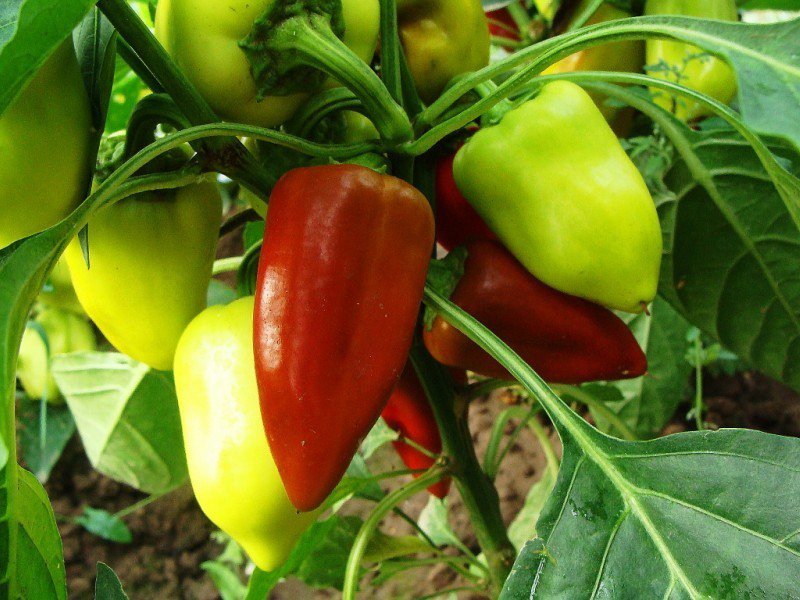 You may be interested in:
You may be interested in:Sprouted and germinated for half an hour in a pink solution of potassium permanganate, pepper seeds can be sown in a universal soil in late February – early March. Capacity should be with drainage. The substrate must first be well shed with water.
It is necessary to sow in pits with a depth of 1.5 cm and with a distance between them of 3-5 cm, so as not to damage the delicate sprouts when picking. After sowing, you should carefully sprinkle the recesses with the ground, sprinkle the surface of the soil with warm water, cover the container with film and put in a warm place (25-28 ° C) without draft. After 4 days, the soil must be irrigated again.
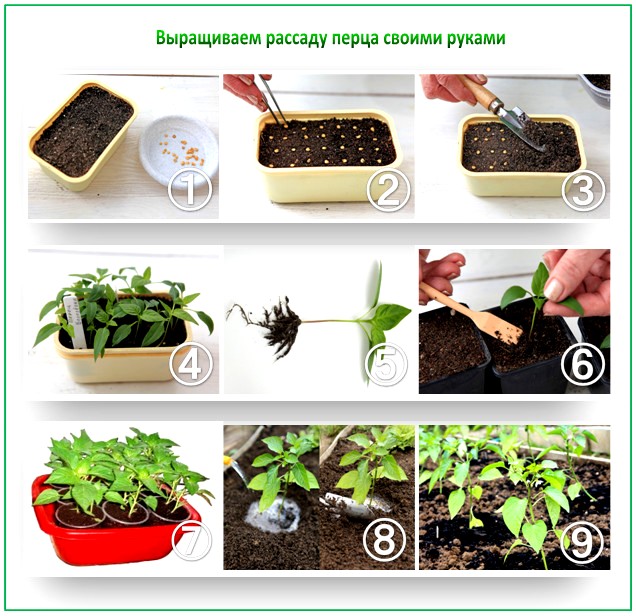
About 6-10 days from the moment the seeds are sent to the soil, seedlings should appear. The container must be placed in a bright place and remove the film. It will take additional illumination (so that daylight hours are 12-14 hours) and a 2-3 day drop in air temperature to 20 ° C (then you should maintain the temperature within 22-25 ° C).
Watering should be moderate, while not drying out the soil. For irrigation, it is recommended that the water be kept at room temperature. You can’t use cold, it helps to delay the growth of the plant.
How to determine when it is time to dive peppers after emergence
3 weeks after sowing, young plants are usually ready to dive. To pinpoint when it's time dive pepper seedlings, you must definitely follow its development. The signal for action will be the appearance of the third real leaf (excluding cotyledons). Transplantation of immature seedlings is also practiced in the stage of cotyledons or overgrown with 4-6 true leaves.
A belated change of habitat is also not recommended, since specimens compactly planted in one container will begin to oppress each other with their leaves and intertwine their roots. They will stretch and weaken, which will complicate the subsequent transplant. In addition, a developed root system experiences stress from such actions for a long time. During extraction from the old pot, it can also be damaged, because of which little water and nutrients will enter the aboveground part. All this will affect growth, and ultimately the productivity of the future pepper crop.
Recommended Dates
Duration of picking depends on the timing of sowing, and they are selected taking into account local climatic conditions and early maturity of the variety. The lunar calendar also helps in this matter.
In the greenhouse
These works are carried out from mid-April to June 10. In central Russia, the climate allows you to plant pepper in unheated greenhouses from the second decade of May.
Transplanting to the greenhouse is carried out when the seedlings reach the age of 55-65 days. For a couple of months, depending on the variety, the pepper should reach a height of 20-30 cm. Examples with 6-7 pairs of bright green leaves, a strong, non-lignified stem with short internodes and several buds that are set are considered ready for the greenhouse environment.
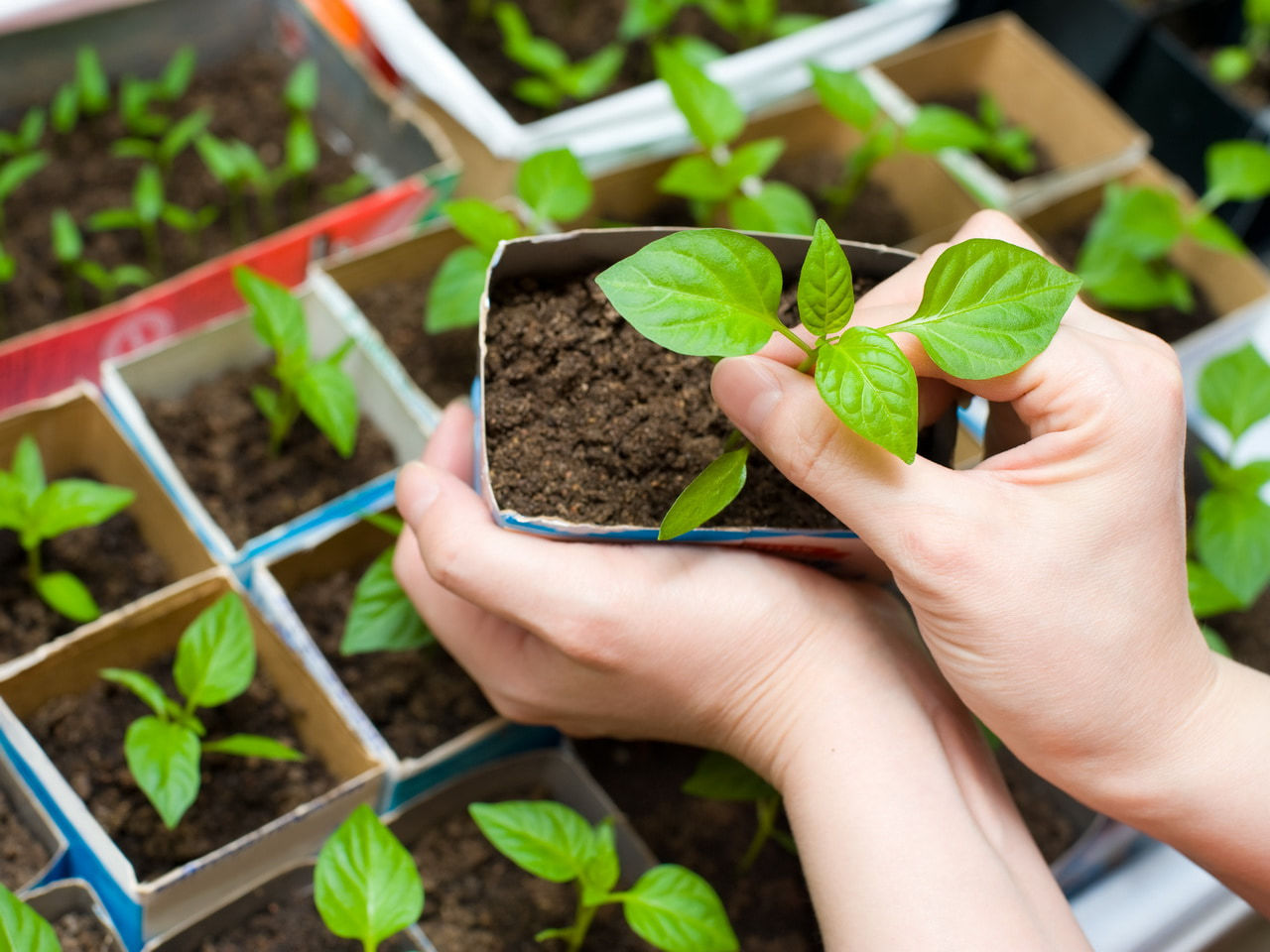
On the windowsill
If the seeds were sent to the soil in the second decade of February, then seedlings can be replanted in personal pots in early March. The interval between these procedures is approximately 15-20 days.
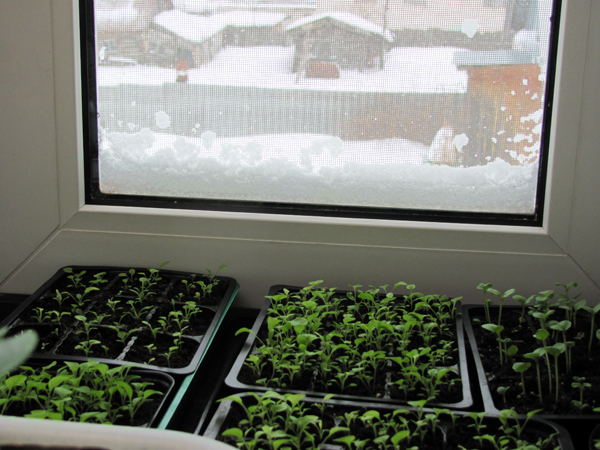
In the phase of the waning moon, the reverse process occurs. A transplant at this time is less effective. Although it is believed that the presence of the Earth's satellite in the fertile signs of the Zodiac (Cancer, Taurus, Capricorn, Pisces, Libra and Scorpio) has a positive effect and can improve the situation. But with infertile signs (Aquarius, Leo and Aries), it is better to postpone the transplant.
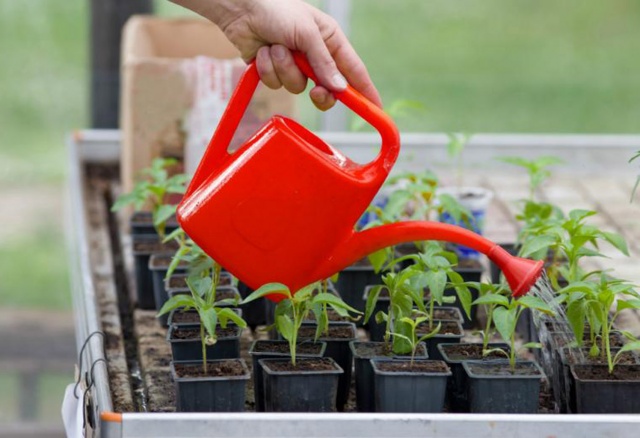 You may be interested in:
You may be interested in:It is not recommended to carry out the procedure in the new moon (all nutrients accumulate in the roots) and in the full moon (energy is concentrated in the aerial part of the plant). You can focus on favorable dates regardless of the place of growing seedlings.
| Month | Auspicious days | Bad days |
|---|---|---|
| February | 1, 2, 8-12, 15, 24 | 4, 5, 18-20 |
| March | 4, 10-14, 17, 26 | 3, 5-7, 20-22, 31 |
| April | 2-4, 7, 9, 11, 16, 25 | 5, 18-20 |
| May | 7-10, 14, 15, 28 | 4-6, 19, 20, 29, 30 |
| June | 4-6, 12-14 | 2-4, 16-18 |
Rules and methods of diving
The most important rule of picking pepper is not to damage its root system. Manipulations with the seedling should be done with extreme caution.
There is no need for deep burial of the plant. Better to plant to the same level. Addition of a soil layer 1-1.5 cm thick is permissible. Cotyledon leaves should definitely not hide under the substrate. The roots of the planted specimen should not be twisted.
A common way to transplant pepper involves the following:
- a couple of hours before a pick, you need to water the substrate abundantly so that plants can be easily extracted from it;
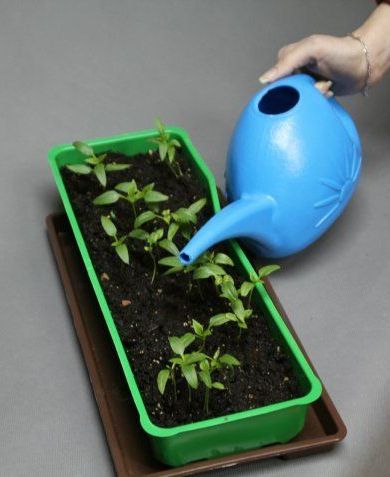
Watering the substrate - slightly compact the soil in a new container and make a recess in it, which will ensure the placement of the entire root;
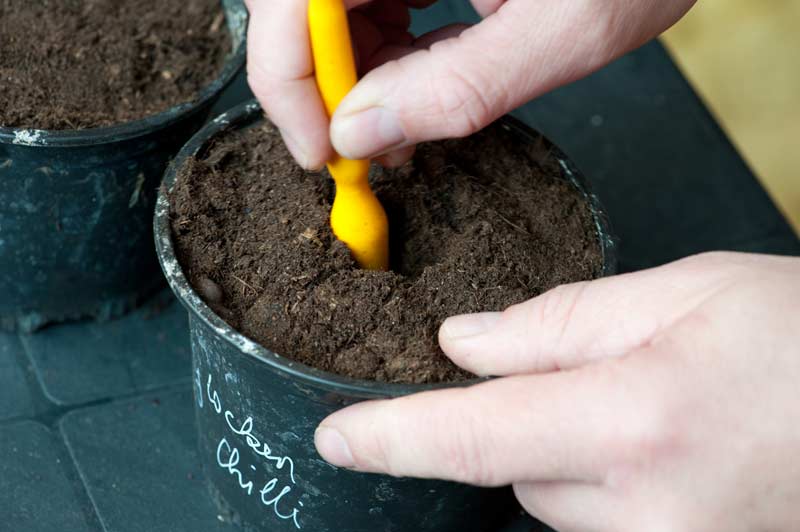
Soil deepening - gently dig a spoon or a stick (it is best to purchase special tools for this purpose) pepper and remove it together with the soil. It is recommended not to hold the seedling by the stem, preferably by the earthen lump, or by the cotyledonous formations;
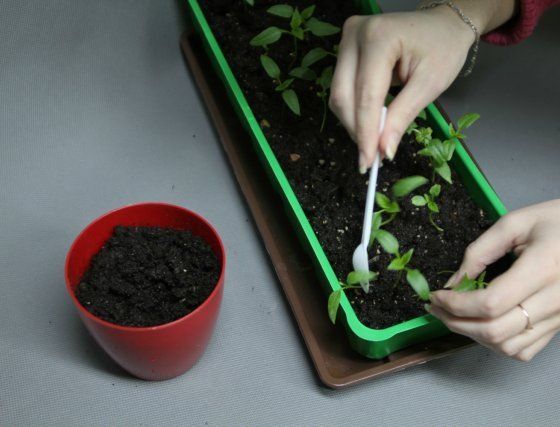
Seedling Extraction - free the root system from excess soil;
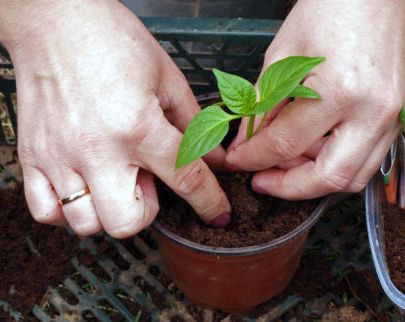
Root System Cleanup - place the pepper in the recess so that the roots are free (bending and twisting, especially counterclockwise, can affect the development of the plant);
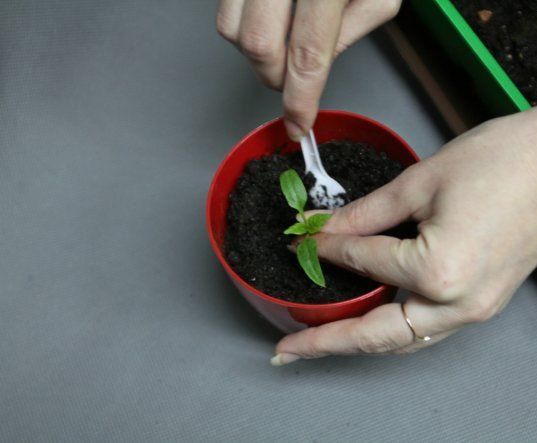
Seedling moving - fill with a substrate, slightly compact the soil with your fingers at the base of the stem;
- pour warm water and put on 2-3 days away from bright light.
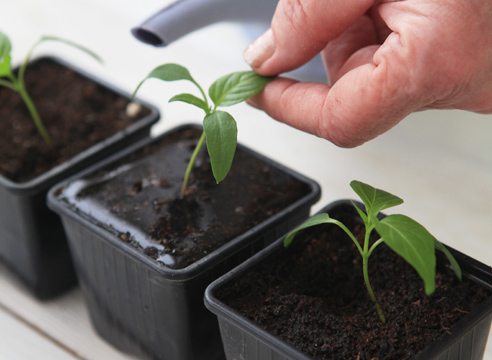
Watering
The term “pick” also implies pinching the central root. But since pepper is quite sensitive to various injuries, therefore pinching this particular plant is not always advisable.
Many experienced gardeners immediately sow this culture in separate cups. Over time, seedlings need a more spacious container. In this case, the transshipment method is considered more gentle, since the roots are not exposed and are not subject to mechanical damage.
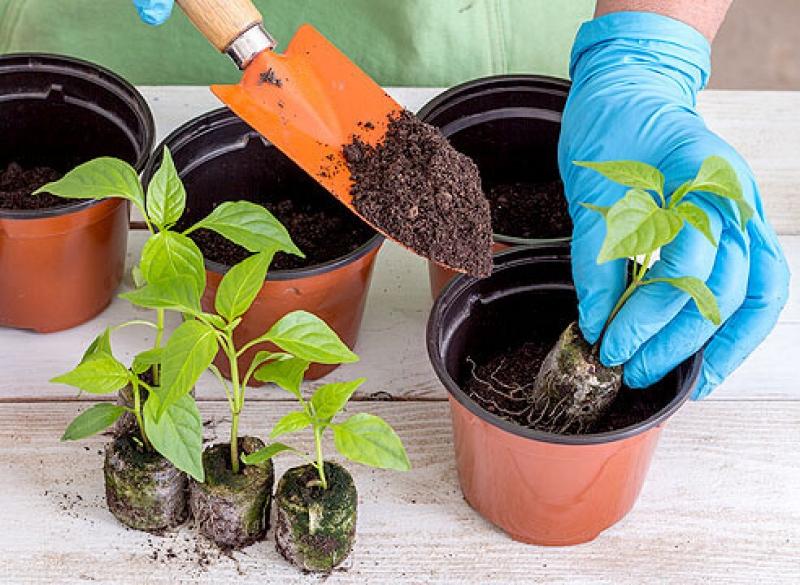
The sequence of actions with this method is as follows:
- 2 days before the procedure, stop watering the seedlings so that the earthen lump can be freely removed from the tank;
- fix the plant between the fingers, turn the container with seedlings over and gently shake out together with a lump of earth;
- place in a more spacious container and fill the voids with nutritious soil mixture;
- pour warm, settled water.
Common Growing Questions
Despite special precautions when picking pepper, the procedure itself is not very complicated and allows you to get strong, productive specimens. However, you need to choose the optimal time for transplantation, as well as create good conditions before and after it.




 Calorie pepper stuffed with meat and rice - BZHU per 100 grams
Calorie pepper stuffed with meat and rice - BZHU per 100 grams Gorky pepper - the best varieties for open ground
Gorky pepper - the best varieties for open ground Hot pepper seeds - the best varieties for open ground and reviews
Hot pepper seeds - the best varieties for open ground and reviews Capsicum tincture for hair - how to use and reviews
Capsicum tincture for hair - how to use and reviews